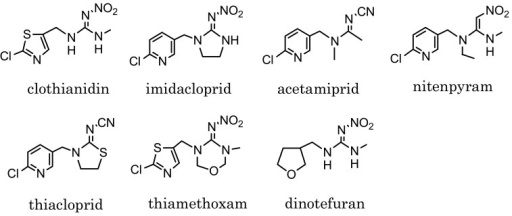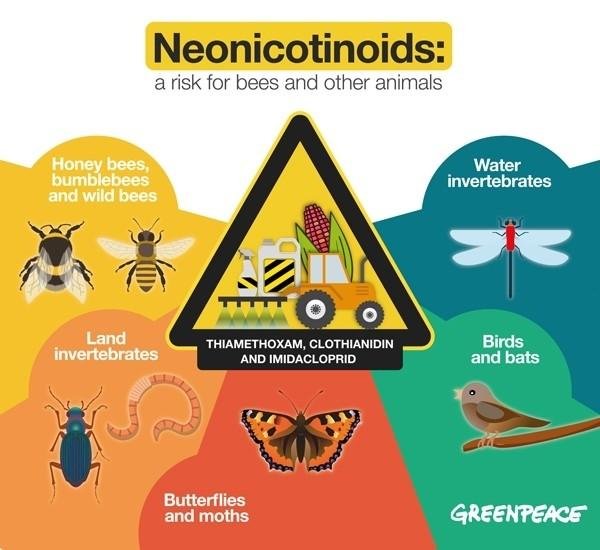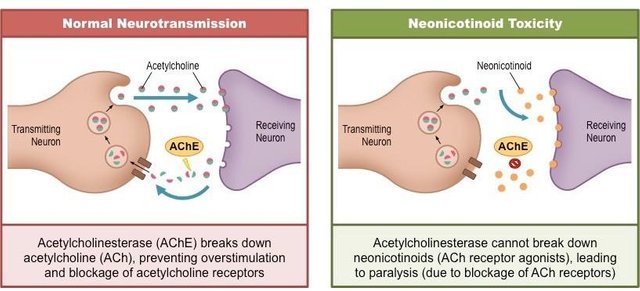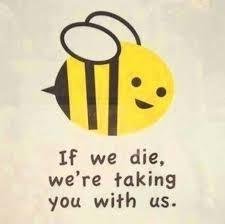[Steemstem #2] Honey...Safety Concerns...A worldwide Study about neonicotinoids in honey.
Hello Steemers!!!
Honey is considered Nature's finest work. It is produced by bees from the nector of pollen.Honey as such is considered among the purest forms of food besides being one of the most healthy foods in the world. It has a vast number of medical benefits, healing being one among them.

But what if this HONEY becomes undesirable for your health. The recent study has posed some serious questions regarding the safety concerns of honey in present days.
Is the Honey still beneficial for your health or has it become Harmful with medical implications?
Recent study was conducted worldwide on honey and presence of insecticide Neonicotinoids was established in the honey samples allover the world. A global study was conducted on 198 honey samples collected around the world and it was found at least one of five tested compounds (acetamiprid, clothianidin, imidacloprid, thiacloprid, and thiamethoxam) in 75% of all samples, 45% of samples contained two or more of these compounds, and 10% contained four or five. The concentrations of the pesticides although are low to produce the serious toxicity among humans but the bees population have declined drastically along with effects on some vertebrates and invertebrates.
 Source
Source
What are neonicotinides?
Neonicotinoids (neonics) are a relatively new type of insecticide, used in the last 20 years to control a variety of pests.
Neonics are systemic pesticides which are a class of neuro-active pesticides chemically resembling Nicotine. Unlike contact pesticides, which remain on the surface of the treated foliage, systemics are taken up by the plant and transported to all the tissues (leaves, flowers, roots and stems, as well as pollen and nectar).
The neonicotinoid family includes acetamiprid, clothianidin, imidacloprid, nitenpyram, thiacloprid, dinotefuran and thiamethoxam. Imidacloprid is the most widely used insecticide in the world.
 Source
Source
Toxicity
Neonics affect the central nervous system of insects. They bind to receptors of the enzyme nicotinic acetylcholine, causing excitation of the nerves, leading to eventual paralysis and death. Neonicotinoids may impact bees’ ability to forage, learn and remember navigation routes to and from food sources. This specific neural pathway is more abundant in insects than warm-blooded animals, so these insecticides are selectively more toxic to insects than mammals.
The concentration of neonicotinoids in the honey samples: 1.8 ± 0.56 nanograms per gram
Defining the thresholds below which neonicotinoids would not even have a sublethal effect under chronic exposure is much more difficult than assessing levels corresponding to short-term acute toxicity. Therefore, the proportion of samples that may affect bees cannot be ascertained based on current knowledge.
Bombus affinis, a bumble-bee endemic to North America, has decreased in nearly 90% of its natural habitats, much of which has been attributed to the use of neonicotinoid based pesticides.
Birds, aquatic invertebrates and other wildlife have been seen affected by this pesticide.
 Source
Source
Human Toxicity
On the basis of animal studies, it is classified as ‘‘moderately toxic’’ (class II by WHO and toxicity category II EPAV). It can cause severe gastrointestinal symptoms along with respiratory distress and certian neuropsychiatric features. However these symptoms regress with supportive and symptomatic treatment. However a chronic exposure of neonics can aggravate these symptoms affecting systemic organ systems including brain. Recent evidence for impacts of neonicotinoids on vertebrates, including humans, and especially evidence for up-regulation of nicotinic a4b2 AChRs receptors in the mammal brain during chronic exposure
 Source
Source
Crux of Study
Mitchell et al. looked at the prevalence of these pesticides in honey from across the world and found traces in the majority of samples tested.
A global survey of neonicotinoid contamination in honey samples from all continents (except Antarctica), as well as numerous isolated islands was done by Mitchell et al. They measured the concentrations of five commonly used neonicotinoids—acetamiprid, clothianidin, imidacloprid, thiacloprid, and thiamethoxam—in 198 samples collected through a citizen science project. Overall, 75% of all honey samples contained quantifiable amounts of at least one neonicotinoid. This proportion varied considerably among regions, being highest in North American (86%), Asian (80%), and European (79%) samples and lowest in South American samples (57%). 30%of all samples contained a single neonicotinoid, 45% contained between two and five, and 10% contained four or five. Multiple contaminations were most frequent in North America, Asia, and Europe and least frequent in South America and Oceania. Frequency of occurrence was highest for imidacloprid (51% of samples) and lowest for clothianidin (16%). Maximum and average concentrations among positive samples were highest for acetamiprid and thiacloprid.
 Source
Source
Bees rely on nectar and pollen sources for their survival. Nectar is transformed into honey and stored in the hive for daily adult consumption and is essential for winter survival. A mature colony can be populated by up to 60,000 adult bees and therefore needs vast amounts of food. Individuals harvest nectar and pollen less than 4 km from the hive, on average, but may travel up to 12.5 km away , which makes bees distinctive sentinels of environment quality. Indeed, the residue level of pesticides in honey from a hive is a measure of the contamination in the surrounding landscape.
This worldwide description of the situation should be useful for decision-makers to reconsider the risks and benefits of using neonicotinoids and provides scientists an inventory of the most frequent combinations of neonicotinoids found in honey.

Source
Steem On
May The Steem Be With Us
To all the Kashmiri people on Steemit...Karew Kousher Steemit Join Discordas Paith


@mrainp420 has voted on behalf of @minnowpond. If you would like to recieve upvotes from minnowponds team on all your posts, simply FOLLOW @minnowpond.
@minnowpond1 has voted on behalf of @minnowpond. If you would like to recieve upvotes from minnowponds team on all your posts, simply FOLLOW @minnowpond.
Congratulations! This post has been upvoted from the communal account, @minnowsupport, by mirhimayun from the Minnow Support Project. It's a witness project run by aggroed, ausbitbank, teamsteem, theprophet0, someguy123, neoxian, followbtcnews/crimsonclad, and netuoso. The goal is to help Steemit grow by supporting Minnows and creating a social network. Please find us in the Peace, Abundance, and Liberty Network (PALnet) Discord Channel. It's a completely public and open space to all members of the Steemit community who voluntarily choose to be there.
@royrodgers has voted on behalf of @minnowpond. If you would like to recieve upvotes from minnowponds team on all your posts, simply FOLLOW @minnowpond.
This post has received a -16.67 % downvote from @meanpeoplesuck thanks to: @blacklist-a.